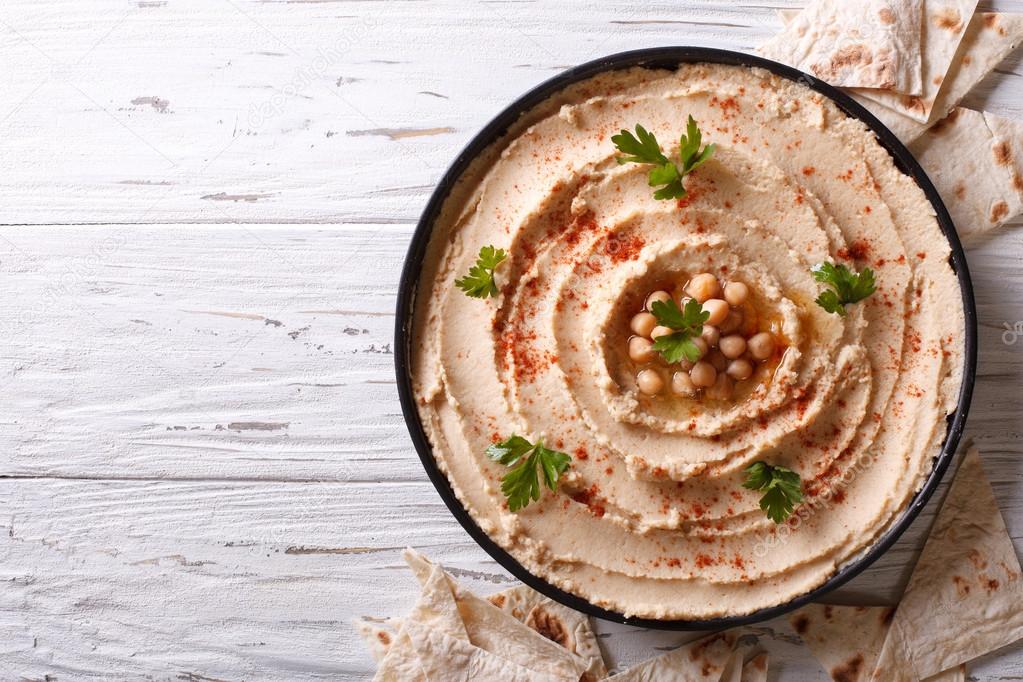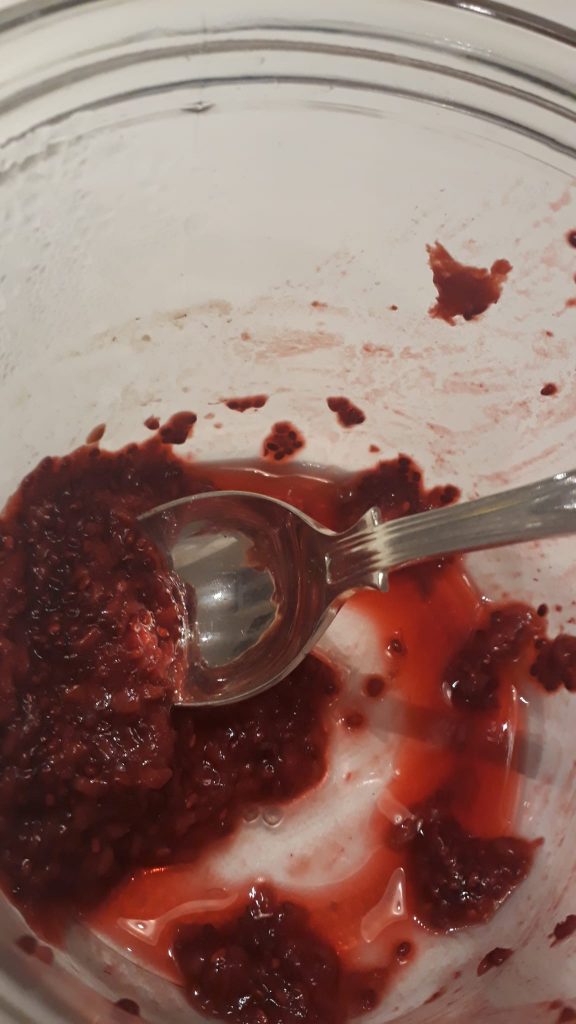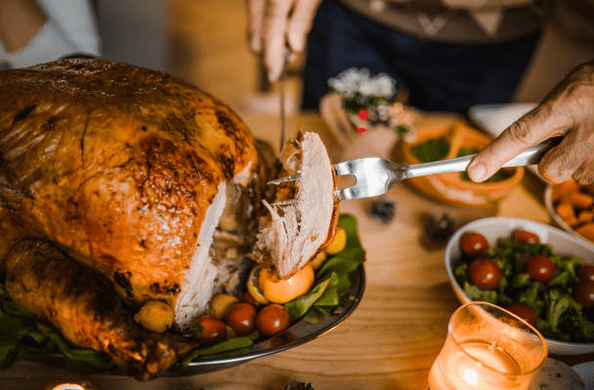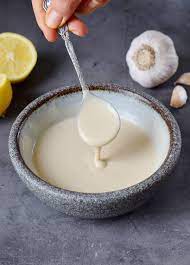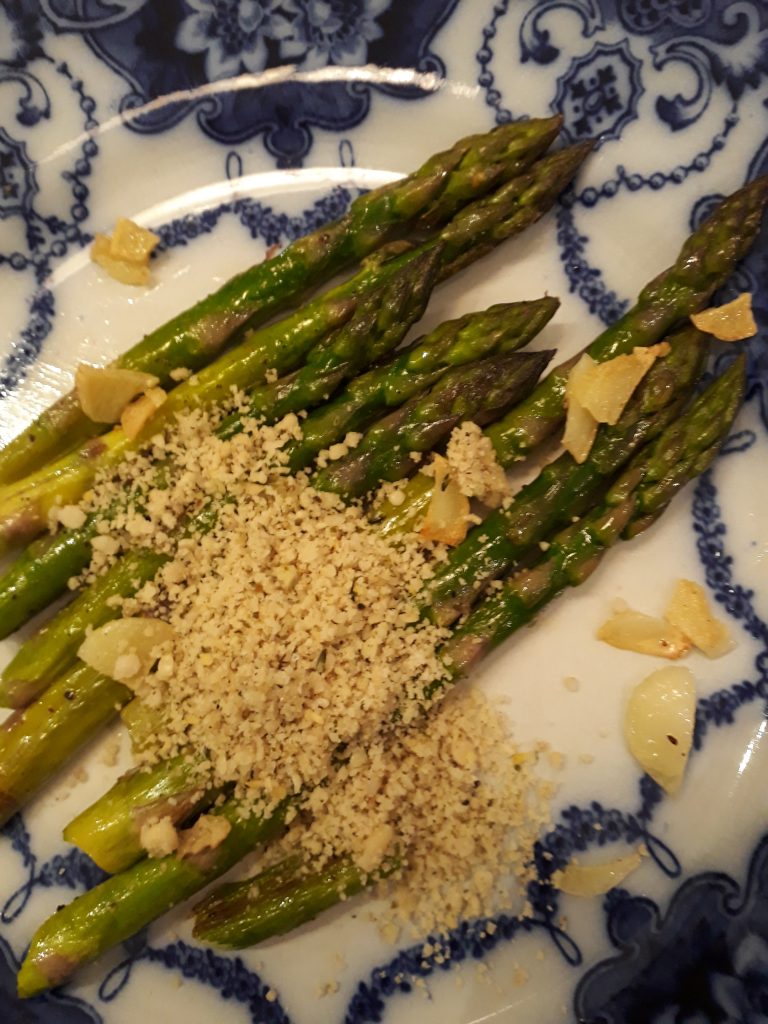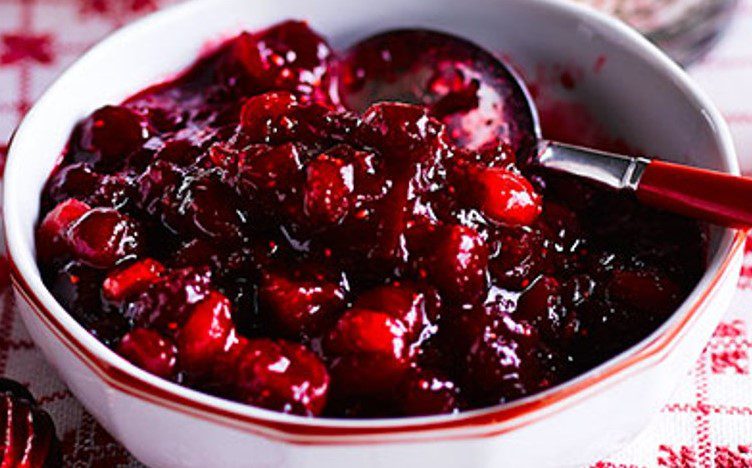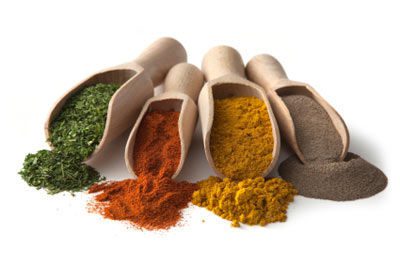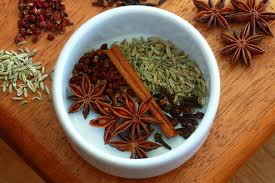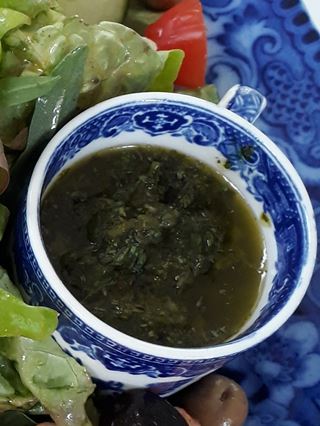
Jul 1, 2022 | Anna's Best Recipes, Dressings, rubs, spreads, sauces & more, Sides, starters, soups & snacks
There’s nothing like home-made hummus for flavour. It’s super-easy to do and if you like it, make a big batch and freeze some for the future.
1 mugful of cooked chickpeas (or haricot, cannellini, butter or broad beans) – keep some of the cooking water if you have cooked your own
OR
400g tin of no added sugar chickpeas, rinsed and drained
1½-3 tbsp olive oil (extra virgin)
2 large cloves garlic, crushed
Juice of ½ – 1 lemon
1 heaped dessertspoonful tahini (health stores/Asian shops. Raw tahini such as Carly’s brand is best)
Plenty of freshly ground black pepper
1 rounded tsp ground coriander
1 rounded tsp ground cumin
Generous pinch or two of Himalayan/Atlantic Sea Salt
Optional extras (see below)
- Blitz everything together in your food processor or mini food processor until mixed. You may need a bit more liquid (lemon juice or olive oil) to get everything mixing well.
- Add extra lemon juice/olive oil to taste. If the mix is too thick add a a bit of chickpea cooking water or plain water and blitz again.
Blitz in one or two of the following if you like:
- 2 tbsp chopped fresh coriander, parsley or chives,
- 3-4 tomatoes you have roasted or cooked under the grill till soft
- A teaspoon of spicy harissa paste (from ethnic shops) or ½ teasp chilli powder
- A teaspoon of sun dried tomato paste from the jar
- A teaspoon of black olive tapenade
- 2-3 roasted red peppers (available in jars from ethnic shops)
Tip:
Grinding your own cumin or coriander with a spice grinder gives a dramatically more flavoursome spice. This is because ground spices, when stored, lose some of their health-giving, aromatic oils. Always store your ground spices in an airtight container in a dark place.
Why this is good for you:
Most shop-bought hummus is made using cheap, refined (toxic) oils instead of the traditional extra virgin olive oil which is a superfood. It stands to reason that making your own is head and shoulders above anything else in quality and freshness.

Jun 28, 2022 | Dressings, rubs, spreads, sauces & more, Knowledge Base

This is one of my favourite tasty things to recommend to clients because it’s quick and easy. And makes a difference. Because of my background in looking at the science of herbs, spices, and their health effects I was excited to see the ingredients.
Every herb and spice contains components that make your gut an unfriendly place for bad bugs. And a friendly place for the good guys! This has enormous repercussions on your overall digestive health and inflammation levels all over your body. Plus the fermentation process amplifies the effects of the ingredients. It’s sweetened with delicious plump sultanas which feed the beneficial gut bug akkermansia mucinophilia. This clever little bacterium is critically important for restoring or maintaining gut health. For information on stockists go to www.spoonfulbotanical.com.
Need help? Book your FREE quarter-hour call.
Phone + 353 87 981666 or email anna@annacollins.ie NOW.

Dec 21, 2021 | Anna's Best Recipes, Dressings, rubs, spreads, sauces & more
I made this last weekend for a new gluten-free stollen recipe I was working on and wow its delicious. So was the Stollen just posted on blog now. The jam recipe comes from www.gimmesomeoven.com and it’s a good one. I swapped out the syrup for lower sugar sweetening options.
2 cups fresh or frozen fruit (see suggestions below)
2 tablespoons chia seeds
1 tablespoon freshly-squeezed lemon juice
Extra sweetness (only if needed): a few drops of pure stevia glycosides or some monk fruit extract, honey or erythritol (from www.pureandnatural.ie or www.iherb.com).
- Heat fruit in a small saucepan over medium-high heat, stirring occasionally, until the fruit is heated through and begins to break down and bubble. Use a spoon or potato masher to mash the fruit to your desired consistency.
- Stir in the chia seeds and lemon juice until combined. Then taste, and stir in some of your chosen sweetener if needed.
- Remove from heat and let cool for 5 minutes. (The jam will thicken considerably as it cools.)
- Give the jam one final good stir. Then serve immediately, or transfer to a sealed container and refrigerate for up to 1 week, or freeze for up to 3 months.
Fruits that work well in chia jam:
Berries (strawberries, blackberries, blueberries, raspberries), cherries, peaches, apricots, plums, pineapple, kiwi…basically any “juicy” fruits. But bear in mind that very sweet fruits like pineapple and kiwi contain a lot of sugars so eating large amounts isn’t so great.
Optional add-ins:
1/2 teaspoon vanilla extract
lemon zest (to make your jam a little more tangy)
a pinch of spices (such as cinnamon, ginger, or nutmeg, etc.)
Why this is better for you:
I’m almost embarassed to say this because it’s so obvious but most jams are loaded with sugar. Sugar as an ingredient added to food lowers your immune system, raises inflammation and can massively contribute to obesity. Standard jams are at least 45% added sugar while the “no added sugar” ones are sweetened with fruit juice concentrate. Although less refined, these jams are still a massive sugar dump into your system, which raises inflammation, slows detoxification and has other unwanted effects. Raw fruits (rich in vitamin C) are more nutritious than cooked but sometimes it’s just nice to have jam. When wet chia seeds swell and emit a gel which is rocket fuel for friendly gut bacteria. Friendly bugs are important for ALL areas of your health – mood, immunity, even blood pressure and mental clarity. Enjoy…

Nov 30, 2021 | Anna's Best Recipes, Dressings, rubs, spreads, sauces & more, Sides, starters, soups & snacks
I love this! First tasted at Christmas in 1989 in Italy while I worked (briefly) as an au pair. So many interesting new foods and flavours. This one was a keeper. If you are a foodie you will definitely enjoy…
Makes 600ml stuffing (enough to stuff the body cavity and neck of a 1.8kg bird) with about 1 cup of leftovers which you can use to make my delicious stuffed mackerel fillets for another dinner. Another thing I like to do at Christmas is add a little bit of chicken bone broth to any stuffing that didn’t fit in the bird. Just enough to wet it and allow you to compact it. And then bake in a parcel in the oven at 180C for around 40 minutes. Give that similar gorgeous meaty flavour and moisture as you get when its been cooked in the bird.
260g cooked peeled chestnuts
or
130g dried peeled chestnuts , soaked overnight, then boiled til tender, drained
1 heaped dsp fresh thyme leaves (or a 1 level tsp dried, but fresh is much nicer)
1 rounded dsp chopped sage
2 heaped tbs chopped parsley
A few good grinds of black pepper
1/4 level tsp Himalayan or Atlantic sea salt
60g onion, finely chopped so it cooks properly (1/2 a medium onion)
Knob of butter (around the size of a walnut).
- Process or mash thoroughly the chestnuts until they resemble coarse breadcrumbs, tip into a bowl with the onion, herbs and seasoning.
- If using butter, melt it gently. Add your butter to the bowl and mix well. This stuffing can be stored for a couple of days in the fridge before using.
Why this is better for you:
Chestnuts are lower glycaemic index (lower sugar) than bread so are a much healthier alternative. They also contain potassium, which helps your body neutralise the effects of eating too much meat at Christmas. Fresh herbs are antioxidant, anti-inflammatory, support friendly gut bacteria and are anti-ageing – good news especially at Christmas!

Oct 22, 2021 | Anna's Best Recipes, Dressings, rubs, spreads, sauces & more
This is gorgeous Middle Eastern style dressing – creamy, tangy and moreish. Drizzle it over a salad or grilled/roast fish or chicken. If you want you can use a little less water or kefir to make this thicker and use as a dip.
1 rounded tbs light tahini (raw brand if possible, e.g. Carly’s)
1-2 cloves garlic, crushed
2 tbs lemon juice + 125ml cold water OR (instead of lemon + water) 150ml home made kefir
5 tbs extra virgin olive oil
Generous pinch Himalayan/sea salt
Flavour + health boosters: 1/2 tsp ground spice: sweet paprika, cumin or coriander.
In a mini food processor blend all the ingredients till blended. If you are doing this by hand get a decent size bowl, add the garlic and tahini and mix in just 1/4 of the liquid at a time. You are aiming for a consistency about the texture of double cream. You may need to add more water as you go to achieve this. The tahini will clump initially. Just keep mixing, and adding more liquid if needed.
Why this is good for you:
Garlic and lemon are fantastic supporters of detoxification, a critical function for all aspects of your health. Extra virgin olive oil keeps you fuller longer and aids weight loss (yes that IS correct) and is also rich in gut-helping immune-regulating vitamin E and polyphenols. Kefir is tolerated by most dairy-sensitive people because its a pre-digested food. The friendly bugs that manufacture kefir from milk break down the dairy sugar (lactose) and dairy protein (casein) that are the main trigger for dairy sensitivity reactions. Tahini, if its raw, is a good source of healthy omega 6 oils. Omega 6 is found in all raw nuts/seeds.

Feb 25, 2021 | Anna's Best Recipes, Dressings, rubs, spreads, sauces & more, Sides, starters, soups & snacks
If you’re dairy sensitive, one of the things you might miss is a sprinkle of Parmesan here and there. I LOVE this recipe for vegan Parmesan from Angela Elliot’s raw vegan cookbook “Alive in 5”. One of my favourite uses is on top of garlic braised asparagus. I soften 2-3 sliced cloves of garlic on a pan with a tbs extra virgin olive oil and same amount of water until softened. Then I add a bunch of asparagus, cover with a lid/plate, and gently cook for a few minutes until the asparagus has gone bright green. This means it’s done. Dish up and sprinkle with the “Parmesan”. Yum!!!
1 cup raw pine nuts (or half and half pine nuts and hemp hearts, which are more economical than pine nuts and give a creamy texture)
1/4 cup nutritional yeast powder/flakes
1/2 a level teaspoon of Himalayan salt
1 level tsp dried oregano.
Combine the nuts/hemp hearts, yeast, salt and oregano in a mini food processor or electric coffee grinder and pulse until it looks like breadcrumbs.
Keep this in an airtight glass jar in the fridge until you need it.

Dec 17, 2020 | Anna's Best Recipes, Dressings, rubs, spreads, sauces & more
This is a FANTASTIC cranberry sauce and I normally don’t like cranberry sauce. The original is FULL of sugar, which you’ll know from my many social media posts and newsletters, lowers your immunity and makes you inflamed. So here I swap it for xylitol or erhtyritol. This will keep in the fridge for a week or the freezer for a month. If you want to make this more than a week in advance without freezing, sterilize your jars and lids by boiling for a few minutes. Lift out carefully and place on a (not cold!) surface. Pour the cranberry sauce in while hot and put on the lids.
1 cup (230ml) port
6 cups cranberries
1/2-1 1/2 cups erythritol (such as Dr Coys stevia erylite) or xylitol from health shops – add 1/2 cup initially and if you want more sweetness once the cranberries have popped, add more.
2 tablespoons finely chopped or finely grated orange zest (approx 2 medium oranges, organic if possible)
Splash of cointreau (optional)
1/4 teaspoon salt
Whole Spices Try 6 star anise, mace, 8 cloves, 1 blade of mace (or 1/2 teaspoon ground), 1 cinnamon stick
A pinch of ground nutmeg
If there is any one of the spices you don’t like leave out, but the mace and star anise are non negotiable
1.Large pot, add port and (if using) cointreau and bring to the boil.
2.Add cranberries and let cook, stir till they begin to pop, add 1/2 cup erythritol/xylitol, salt, preferred spices and orange zest.
3.Stir till erythritol/xylitol dissolves, cook for another 5 to 10 minutes. More cooking releases more pectin which helps set the sauce.
4.Give it a big stir and leave to cool then into jamjars and away you go.
Why this is better for you:
Cutting the sugar helps your body take a break from its inflammatory and immunity-upsetting effects. Sugar causes your lymphocytes (infection-fighting white blood cells) to become lethargic for several hours. that means your immune defences are down. Did you know that cranberries feed a friendly bacteria in your gut called akkermansia mucinophilia. This clever little creature trims and helps maintain the healthy mucus layer inside you, helping bowel health. And bowel health is essential for EVERYTHING – from getting into remission from autoimmune conditions, to getting improved digestive health, skin, immunity and even mental health. Spices are a powerhouse of antioxidant power – they help reduce inflamation AND lower disease-causing microorganisms inside your gut and systemically.

May 8, 2020 | Anna's Best Recipes, Desserts & drinks, Dressings, rubs, spreads, sauces & more
When I was in Marrakech last year I had a lovely concoction called cafe aux epices – literally coffee with spices. I like to make my coffee as normal, add the spices and then the milk or plant milk. Do remember to buy spices as fresh as possible and store airtight in a dark and ideally cool place. This prevents them losing their potency and flavour. There is a world of difference between stale and fresh spices.
I would suggest the only spice that’s really essential is the Ceylon cinnamon, everything else is mix and match according to your preference.
6 teaspoons ground Ceylon cinnamon
1 teaspoon ground cardamom
1/2 teaspoon of one or more of the following:
Ground cloves
Ground aniseed/fennel
Ground black pepper
Ground ginger
Why this is good for you:
Did you know that you have a very individual metabolic response to caffeine? If you (like me) have the genetic variant of the CYP1A2 gene then having more than 1 cup a day increases risk of high blood pressure and heart disease. This is why studies in the past have produced conflicting results on how coffee affects heart health. BUT just a cup a day can be beneficial for most of us. However some people with digestive issues may need to skip coffee and substitute dandelion coffee (try www.intelligenttea.ie mail order ground dandelion coffee – its delicious). Lighter roast coffee contains more beneficial polyphenols than dark. Polyphenols modify your good bacteria in favour of the good guys that help immunity and reduce inflammation.
Spices have an antioxidant effect. They stimulate your body to make more antioxidants. This is a great idea if you prefer not to struggle with inflammation. All common chronic health conditions of are driven by inflammation e.g. heart disease, asthma, eczema, depression, autoimmune conditions (e.g. hypothyroidism, Crohn’s) and cancer. Tens of thousands of high quality research papers published in peer reviewed scientific journals confirm the various health benefits of spices. By the way, Ceylon cinnamon helps you regulate blood sugar levels. So if you have insulin-resistence (pre-diabetets) or type II diabetes a teaspoon of Ceylon cinnamon a day is a fantastic thing to add in – whether in coffee/coffee substitutes, mixed in porridge/granola or in curries.

Mar 27, 2020 | Anna's Best Recipes, Dressings, rubs, spreads, sauces & more
Did you know that shop-bought spice mixes often contain gluten which is not always listed on the packet? Anyway that’s only really relevant for you gluten-sensitive people out there.
Once you taste this beautiful five spice powder in your stir fries, sprinkled on salmon before grilling, or in a home made hotpot you will never want to go back to commercial, tasteless five spice. Do keep your spices in airtight glass jars somewhere dark. Left in the sun, they lose their marvelous antioxidant potency and their taste too. All spices have hundreds (and some thousand) of peer-reviewed clinical research papers showing various health benefits. When you cook food with spices the food generates fewer toxic by-products (e.g. from grilling, sauteeing or roasting) and the spices stimulate your body’s own antioxidant defences.
1 dsp (dessertspoon) ground Ceylon cinnamon
1 dsp ground cloves
1 dsp fennel seed, ground
1 dsp ground star anise
1 teaspoon Szechuan peppercorns, ground
Electric coffee grinder or spice grinder
1.Grind your fennel, star anise and peppercorns.
2.Mix the spices together and store in an airtight jar somewhere dark.

Feb 7, 2020 | Anna's Best Recipes, Dressings, rubs, spreads, sauces & more
Every herb has healing properties so herb pesto isn’t just about making your food taste even better. Herbs stimulate your body to make more antioxidants. But herbs also have a selective antibiotic effect. That is, every herb has action against certain disease-causing bacteria* AND encourages growth of friendly bacteria in your gut. Different herbs discourage different “bad” bugs.
For the most powerful health effects place the pesto in a clean glass/ceramic jar and leave to ferment on the kitchen counter for 2 days before using. The fermentation potentiates the polyphenols (beneficial plant compounds) making them more usable by your body. Using the garlic helps keep the pesto fresher but isn’t essential. If any fluffiness develops on the top of you pesto just scrape it off before using.
The proportions of ingredients to each other don’t really matter so long as you end up with something that’s not too runny.
A generous handful of one fresh herb: Thyme, oregano, parsley, mint, sage, coriander, basil, tarragon, dill are all good. Rosemary is fantastic as well but very strong-tasting – maybe do 1/2 and 1/2 with parsley.
Extra virgin olive oil to bind (1/2-1 cup)
Optional: 2 large cloves freshly crushed garlic
- Wash the herbs, remove any woody stems (for soft herbs like dill, parsley and basil you use the whole stem so long as its soft).
- If using a mini food processor cut the herbs roughly into 2cm lengths then blitz with the garlic and 1/2 cup of the olive oil until you get a paste. If the food processor isn’t catching the herbs you can add more oil to make it all go round.
If making the pesto by hand chop the herbs finely (a mezzaluna or a large knife with a smooth curved blade is good for this). In a bowl mix with the garlic and extra virgin olive oil. - Decant into a clean glass or ceramic jar covered with a saucer, a piece of muslin, or the lid laid loosely on top. Leave at room temperature for 48 hours before starting to eat. It will be fine for a week in the fridge.
Tip: if the pesto starts to go very brown (this happens with basil and coriander) add a thin layer of extra virgin olive oil on top to help preserve the colour.
Good to know:
Did you know that many gut bacteria are normal in certain amounts but toxic if they overgrow. For example the yeast-like fungus known as candida. Small amounts in your gut are normal but when you have a high carbohydrate diet or take antibiotics or acid-blocking drugs candida can take over. It develops a filamentous form (hyphae) which invade your gut lining and cause damage. Food sensitivities, digestive symptoms, autoimmune conditions (e.g. hypothyroidism) and even mood changes can result.
